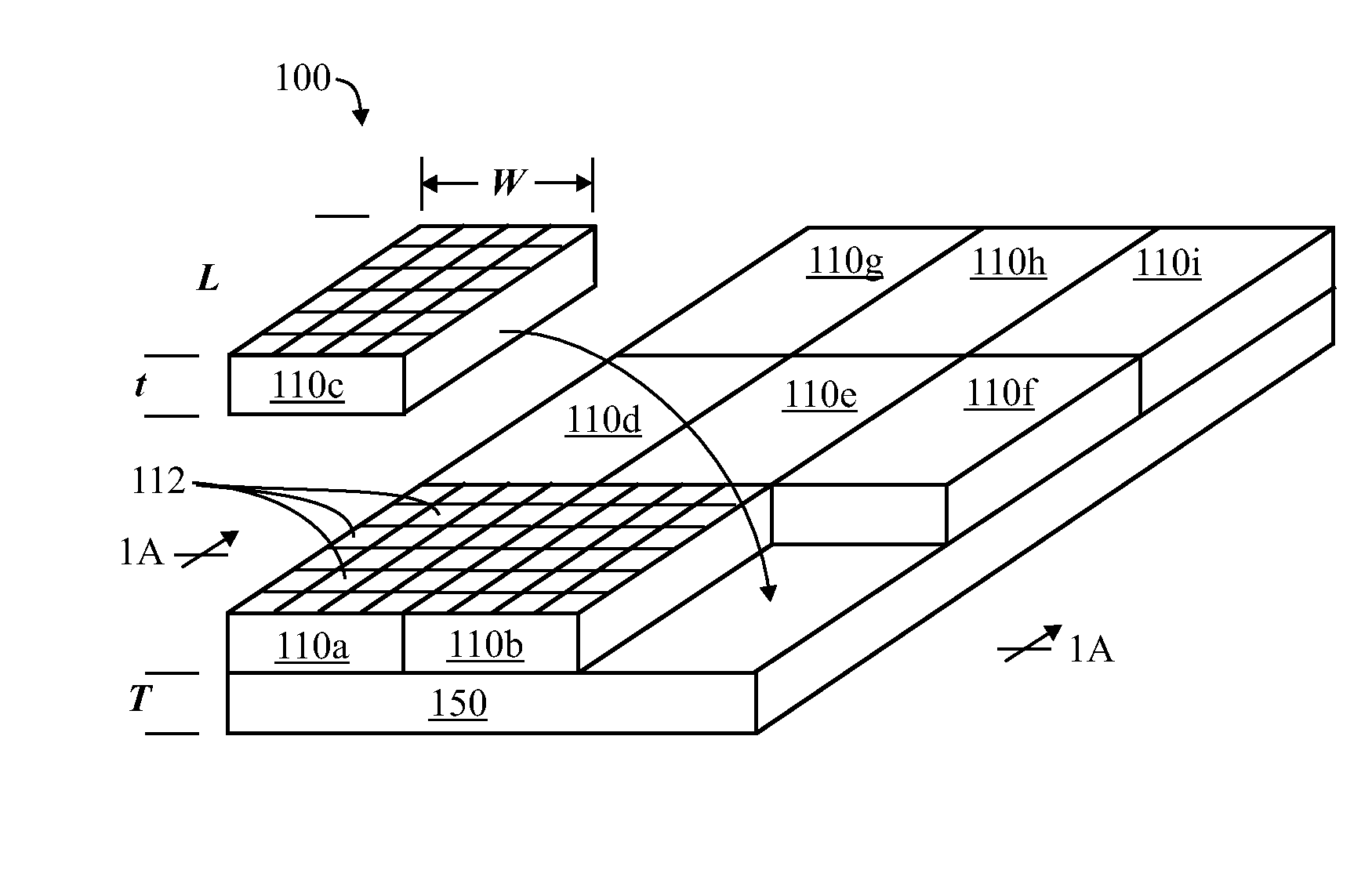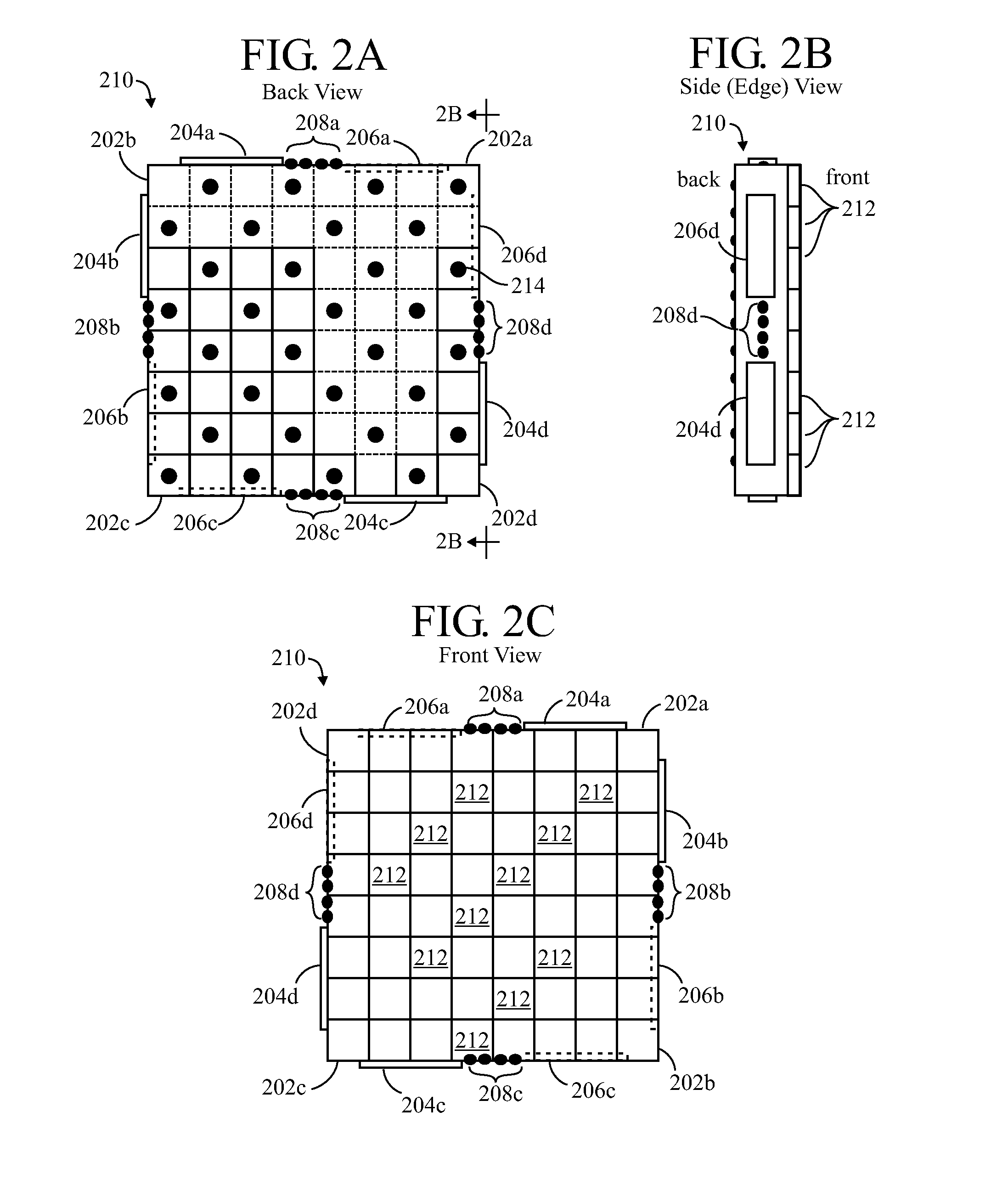Techniques for Tiling Arrays of Pixel Elements
- Summary
- Abstract
- Description
- Claims
- Application Information
AI Technical Summary
Benefits of technology
Problems solved by technology
Method used
Image
Examples
Embodiment Construction
[0048]Various embodiments will be described to illustrate teachings of the invention(s), and should be construed as illustrative rather than limiting. Any dimensions and materials or processes set forth herein should be considered to be approximate and exemplary, unless otherwise indicated.
[0049]The present disclosure is directed to techniques for fabricating large arrays of pixels from tiling smaller arrays (sub-arrays or tiles), where there is a sub-pixel (less than the pitch of a pixel) to zero gap at the seams between tiles. The basic concept is to route all I / O (power and data) through the back of the array so that the tiles can be placed edge-to-edge on all sides. The small arrays can then be arranged into a larger M×N array. This technique is applicable to both imaging systems as well as to projection systems.
[0050]In general, infrared (IR) radiation may have a range of wavelengths of 0.8-20 μm or larger though the most common wavelengths uses for thermal imagery are 3-5 um (...
PUM
| Property | Measurement | Unit |
|---|---|---|
| Fraction | aaaaa | aaaaa |
| Fraction | aaaaa | aaaaa |
| Fraction | aaaaa | aaaaa |
Abstract
Description
Claims
Application Information
 Login to View More
Login to View More - R&D
- Intellectual Property
- Life Sciences
- Materials
- Tech Scout
- Unparalleled Data Quality
- Higher Quality Content
- 60% Fewer Hallucinations
Browse by: Latest US Patents, China's latest patents, Technical Efficacy Thesaurus, Application Domain, Technology Topic, Popular Technical Reports.
© 2025 PatSnap. All rights reserved.Legal|Privacy policy|Modern Slavery Act Transparency Statement|Sitemap|About US| Contact US: help@patsnap.com



